#Tiarella cordifolia
Explore tagged Tumblr posts
Text















There's nothing quite like a drenching spring rain, dripping from countless branches and soaking rock and humus. Each time a breeze wafts through the new spring canopy, a luminous green and trembling being, and shakes loose the clinging rain, I imagine the earth cleansing itself and embracing a timeless act of renewal. Appalachia's forests are being reborn.
Photos taken at Valley Falls State Park.
#appalachia#vandalia#west virginia#wildflowers#spring#valley falls state park#tygart valley river#glady creek#rhododendron trail#smooth solomon's seal#Polygonatum biflorum#heart-leaved foamflower#heartleaf foamflower#Tiarella cordifolia#marsh blue violet#Viola cucullata#northern white violet#Viola minuscula#purple trillium#wake robin#Trillium erectum#rock greenshield lichen#Flavoparmelia baltimorensis
207 notes
·
View notes
Text

Tiarella cordifolia / Heart-Leaved Foamflower at the Sarah P. Duke Gardens at Duke University in Durham, NC
#Tiarella cordifolia#Tiarella#Saxifragaceae#Heart-Leaved Foamflower#Foamflower#False miterwort#Native plants#Native flowers#Wildflowers#Plants#Flowers#Nature photography#Photography#photographers on tumblr#Sarah P. Duke Gardens#Duke Gardens#Duke University#Durham#Durham NC#north carolina#🌺🌻
19 notes
·
View notes
Text
Word List: Flower

beautiful words with "flower" to plant in your next poem/story
Blanketflower - gaillardia—i.e., any of a genus (Gaillardia) of American composite herbs with showy flower heads
Cuckooflower - a bitter cress (Cardamine pratensis) of Eurasia and North America; ragged robin (i.e., a perennial herb, Lychnis flos-cuculi, of the pink family cultivated for its pink flowers with narrow-lobed petals)
Dayflower - any of a genus (Commelina) of herbs of the spiderwort family having one petal smaller than the other two
Flowerage - a flowering process, state, or condition
Floweriness - of, relating to, or resembling flowers; marked by or given to rhetorical elegance
Foamflower - a spring-flowering herb (Tiarella cordifolia) of eastern North America that has white flowers with long stamens and no stem leaves; also called: false miterwort
Gillyflower - carnation (i.e., a plant of any of numerous often cultivated and usually double-flowered varieties or subspecies of an Old World pink, Dianthus caryophyllus, found in many color variations; also: a moderate red; archaic: the variable color of human flesh)
Globeflower - any of a genus (Trollius) of plants of the buttercup family usually with globose yellow or orange flowers
Nonflowering - producing no flowers; specifically: lacking a flowering stage in the life cycle
Pasqueflower - any of several anemones with palmately compound leaves and large usually white or purple early spring flowers
Passionflower - any of a genus (Passiflora) of chiefly tropical woody tendriled climbing vines or erect herbs with usually showy flowers and pulpy often edible berries
Satinflower - honesty; blue-eyed grass; common chickweed; flannelflower; a plant or flower of the genus Godetia
Strawflower - any of several plants having everlasting flowers
Twinflower - a prostrate subshrub (Linnaea borealis) of the honeysuckle family that is found in cool regions of the northern hemisphere and has fragrant usually pink flowers
Waxflower - a climbing plant (Stephanotis floribunda) of Madagascar often cultivated in the greenhouse for its fragrant white flowers; an epiphytic tree (Clusia insignis) of British Guiana; indian pipe; spotted wintergreen
If any of these words make their way into your next poem/story, please tag me, or leave a link in the replies. I would love to read them!
More: Word Lists
#word list#flowers#writeblr#dark academia#spilled ink#writers on tumblr#literature#writing prompt#poetry#poets on tumblr#light academia#lit#words#langblr#linguistics#nature#creative writing#gustave caillebotte#writing inspo#writing inspiration#writing ideas#writing reference#writing resources
234 notes
·
View notes
Text

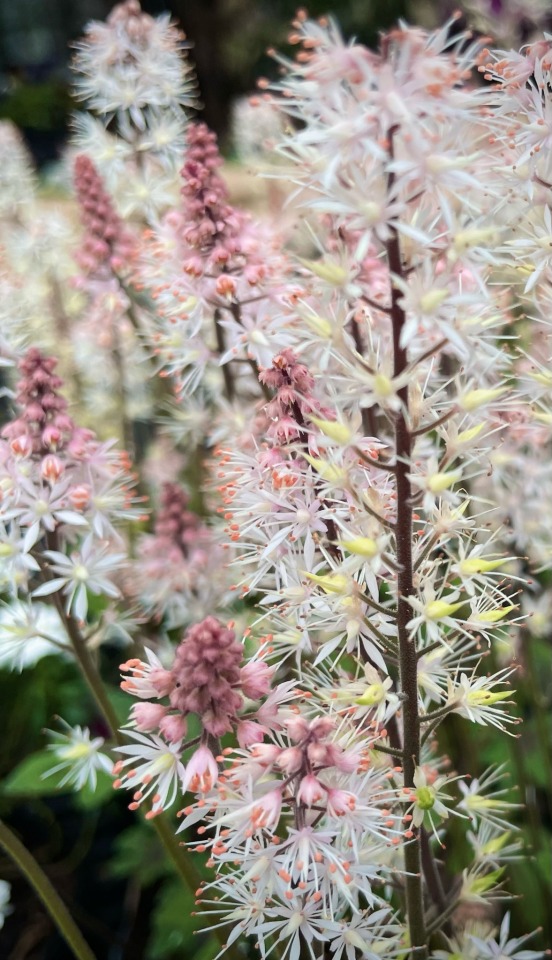
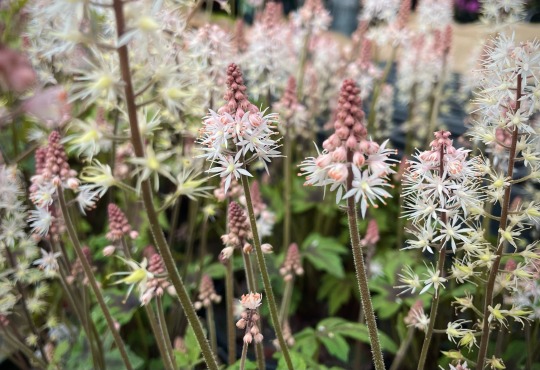
‘Spring Symphony’
Foamflower
Tiarella Cordifolia
March 22nd, 2024
18 notes
·
View notes
Text

tiarella cordifolia heartleaf foamflower albert fw vick jr, 1988, lady bird johnson wildflower center
2 notes
·
View notes
Text
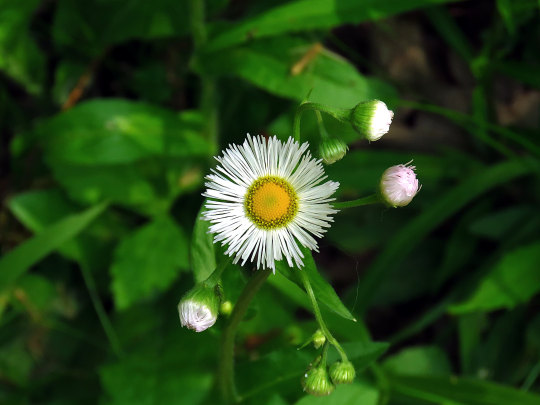
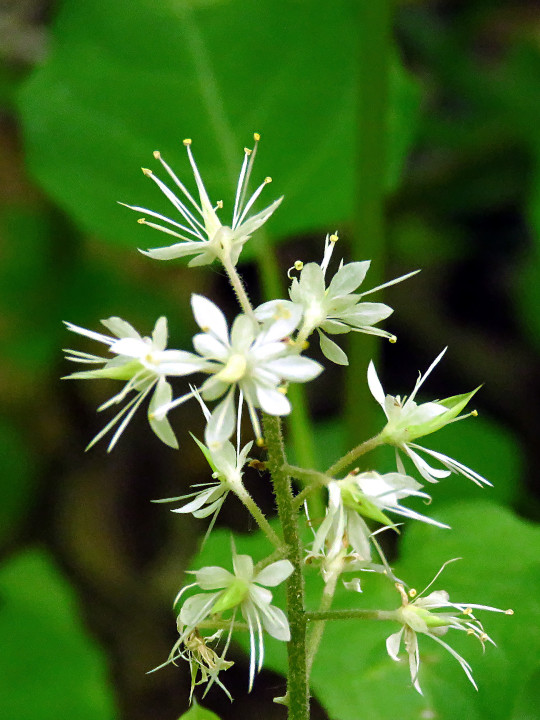
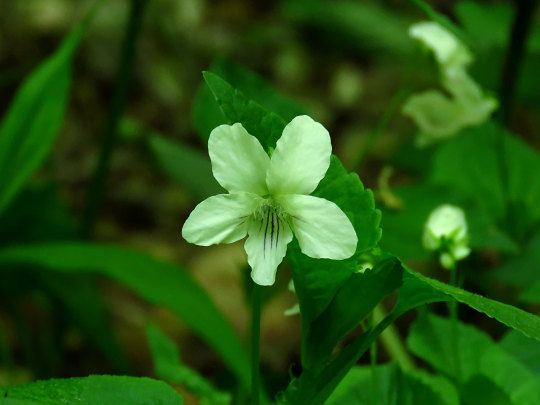
Seen along the Boston Run trail, Cuyahoga Valley National Park, Brecksville, Ohio (2) (3) by fractalv
Via Flickr:
(1) Erigeron philadelphicus (Philadelphia Fleabane) (2) Tiarella cordifolia — foam-flower (3) Striped White Violet; Viola striata
5 notes
·
View notes
Text
An Excerpt From His New Book on How to Help Increase Biodiversity
Aim for continuous bloom. Above: Running foamflower (Tiarella cordifolia), which blooms in spring and early summer, makes for an excellent weed-suppressing, insect-attracting ground cover. Perhaps the most challenging aspect of pollinator garden design is selecting plants that will flower in sequence throughout the season. For example, in southeast Pennsylvania, species such as native willows,…

View On WordPress
0 notes
Text
Harmony in Bloom: Pairing Royal Raindrops Crabapple with Complementary Plants
In the world of landscaping, few trees rival the stunning visual impact of the Royal Raindrops Crabapple. With its vibrant burgundy foliage and abundant blossoms, this ornamental tree can transform any garden into a breathtaking display of color and texture. Today, we explore the art of harmonizing this regal tree with complementary plants to create a garden symphony that resonates with beauty and balance.
Royal Raindrops Crabapple Overview
Before delving into ideal pairings, let's take a moment to appreciate the unique qualities of the Royal Raindrops Crabapple. Known scientifically as Malus 'Royal Raindrops,' this deciduous tree boasts deep red, cutleaf foliage that matures to a rich purple hue. In spring, the tree bursts into a profusion of deep pink to red blossoms, attracting pollinators and turning the garden into a visual spectacle.
Creating Contrast with Evergreens
One effective strategy for enhancing the visual impact of the Royal Raindrops Crabapple is to create contrast with evergreen companions. The year-round greenery of evergreen plants provides a stunning backdrop that allows the striking features of the crabapple to stand out.
Consider pairing your Royal Raindrops Crabapple with low-maintenance evergreens like Boxwoods (Buxus spp.) or Japanese Holly (Ilex crenata). Their glossy green leaves provide a perfect canvas for the Royal Raindrops' burgundy foliage and ensure a vibrant display even in the winter months.
Seasonal Drama with Spring Blooms
To maximize the visual interest throughout the growing season, strategically plant perennials and shrubs that bloom in tandem with the Royal Raindrops Crabapple in spring. This creates a dynamic landscape that evolves with the changing seasons.
Celebrate spring with the delicate blooms of Bleeding Heart (Dicentra spectabilis) or the vibrant hues of Coral Bells (Heuchera spp.). These plants not only complement the crabapple's blossoms but also extend the period of color in your garden.
Understory Planting for Ground-Level Appeal
Enhance the vertical dimension of your garden by incorporating low-growing plants beneath the Royal Raindrops Crabapple. This understory planting not only adds visual interest but also helps in weed suppression and moisture retention.
Opt for groundcovers like Creeping Jenny (Lysimachia nummularia) or Foamflower (Tiarella cordifolia). Their spreading habit and contrasting foliage provide a lush carpet that beautifully contrasts with the crabapple's upright structure.
Fragrance and Texture with Companion Shrubs
Extend the sensory experience in your garden by including fragrant and textural companion shrubs that harmonize with the Royal Raindrops Crabapple. These shrubs add depth and diversity to your planting scheme.
Lilacs (Syringa spp.) or Viburnums (Viburnum spp.) are excellent choices, offering fragrant blooms and appealing textures. Their presence enhances the overall garden ambiance while complementing the Royal Raindrops' majestic appearance.
A Symphony of Colors and Textures with Royal Raindrops Crabapple
In conclusion, the Royal Raindrops Crabapple is not just a tree; it's a centerpiece for creating a symphony of colors and textures in your garden. By carefully selecting complementary plants that span seasons and dimensions, you can elevate the visual appeal of your outdoor space to new heights.

0 notes
Text
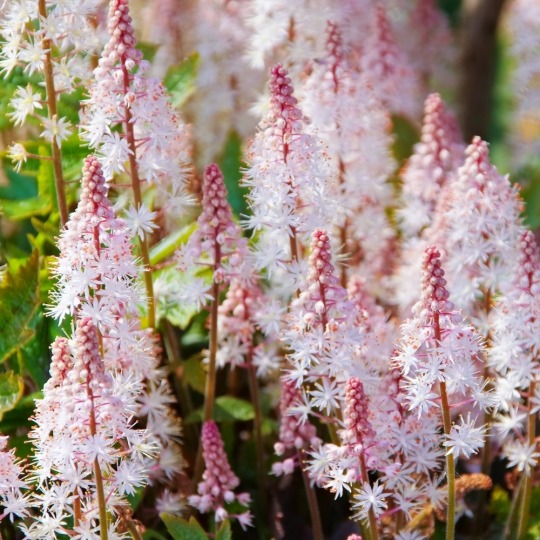
tiarella Pink Skyrocket
#tiarella#tiarella cordifolia#foam flower#foam flowers#pink flowers#white flowers#pink and white flowers#white and pink flowers#pink and white#white and pink#pink aesthetic#flower aesthetic#floral aesthetic#flowers
17 notes
·
View notes
Photo
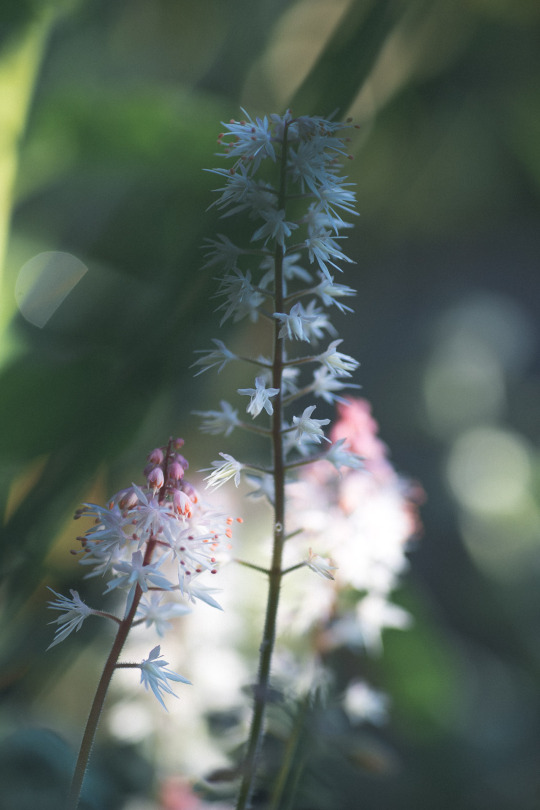
221 notes
·
View notes
Photo


Tiarella cordifolia
Heart Leaf Foamflower
Another Eastern North America mesic forest member of the saxifrage family. In Appalachia this is the star of the stream lining communities and seap communities during the transition from spring to summer; but, it’s not limited to requiring these seaps or streams, rich woodlands and decaying stumps offer enough moisture and nutrients for a foot hold. I suppose some people may argue there favorite var. or microspecies: (T. wherryi byosyn.= T. cordifolia ssbsp. wherryi), T. cordifolia var. cordifolia, and T. cordifolia var. collina.
Though, thats probably going to be a discussion based on how you see these in-situ or in a garden.
As for microspecies denotation: there are current and on going bouts for arguements based on apomictic conjunction in-situ from outcrossing hybrids that evolved in allopatric events and now occur synonymously by aesthetic in populations, meeting or reconverging in sympatry. Stolon conjunction and disconnection is present only in what some people confirm as T. wherryi where apomictic populations persist and form by vivipory mainly instead of seed casting. The issue stems from occasional outcrossing events and imbrications of species in sympatry, almost like a reconverging and settling. (small scale Species cladistics level brading?) Anywho, MOBOT collective does note this issue somewhat and in FNA vol. 8 a foot note was added along time ago about accepted species designation, instead of calling it a microsp or subsp.
“Tiarella wherryi and T. cordifolia have been differentiated primarily on the basis of lack of stolons in T. wherryi. Such plants grow in mixed populations and it has been impossible to differentiate taxa on the basis of herbarium specimens. It is also thought that the differences between the taxa might be a result of altitudinal variation in habitat. Attempts by Lakela to distinguish var. cordifolia and var. austrina on the basis of leaf dimensions and marginal dentation have been thwarted by continuous variation in these characteristics.” - Flora of North America, MOBOT, (VOL. 8)
Any-whom’st’ve this is a stress post, and I should be studying for finals.
#Saxafragaceae#tiarella#tiarella cordifolia#botany#ecology#evolution#plantblr#ohio#wildflowers#nature
23 notes
·
View notes
Text














Spring at Ohiopyle, Part 2: Jonathan Run.
The damp floodplain and wet seeps along Jonathan Run Trail produce truly fabulous spring wildflower displays, with peak color between the last week of April and the first two weeks of May. Two of my favorite spring bloomers thrive along this trail: dwarf ginseng (Panax trifolius), which has luckily escaped the over-harvesting that has made its larger relative ever more scarce, and creeping phlox (Phlox stolonifera), a gorgeous and hardy colonizer that should be in every native wildflower garden (it's now well established in my own). And if you can take your eyes off the wildflowers long enough, you'll be enchanted by the numerous cascades created by Jonathan Run's steep descent into the Youghiogheny River Gorge.

#appalachia#vandalia#wildflowers#spring#ohiopyle state park#jonathan run#jonathan run trail#youghiogheny river gorge#pennsylvania#dwarf ginseng#Panax trifolius#creeping phlox#Phlox stolonifera#american cancer-root#Conopholis americana#mayapple#podophyllum peltatum#heartleaf foamflower#Tiarella cordifolia#golden ragwort#Packera aurea
78 notes
·
View notes
Text

Toxomerus geminatus on Tiarella cordifolia / Eastern Calligrapher on Heart-Leaved Foamflower at the Sarah P. Duke Gardens at Duke University in Durham, NC
#Toxomerus geminatus#Toxomerus#Syrphidae#Tiarella cordifolia#Tiarella#Saxifragaceae#Eastern Calligrapher#Heart-Leaved Foamflower#Foamflower#False miterwort#hoverfly#Native insects#Native pollinators#Native plants#Native flowers#Wildflowers#Insects#Pollinators#Plants#Flowers#Nature photography#Photography#photographers on tumblr#Sarah P. Duke Gardens#Duke Gardens#Duke University#Durham#Durham NC#north carolina#🌺🌻
10 notes
·
View notes
Photo

This is in one of THE shadiest and THE driest spots in the woodland garden. Pachysandra was attempted a few years back but (fortunately) couldn't take it.
This Tiarella cordifolia while not exactly ruling this tough turf, it is nonetheless holding on.
#my post#gardeners of tumblr#gardeners on tumblr#Tiarella cordifolia#Tiarella#Foamflower#flowers#woodland garden
9 notes
·
View notes
Text

The foam flower (Tiarella cordifolia) is a perennial plant that prefers moist, well-drained soil and requires partial to full shade. Watering should be consistent, keeping the soil evenly moist but not waterlogged. This plant is native to the eastern United States, including the Appalachian Mountains. Ideal for woodland or rain gardens, this plant will produce the delicate, foam-like flowers of its namesake in late spring to early summer.
#foam flower#tiarella cordifolia#perennial#native plants#woodland#woodland garden#rain garden#horticulture#garden#gardening#my garden
0 notes
Photo
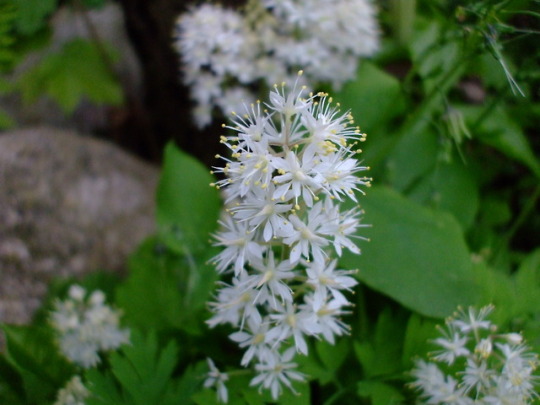
Tiarella cordifolia
Please check out wildflower ebooks: http://lakesideendeavors.com/growwild/ Want wildflower seeds? Check out our Ebay: https://www.ebay.com/usr/lakesideseeds
#Tiarella cordifolia#wildflower#wild flower#wildflowers#wild flowers#flower#flowers#plant#plants#nature#nature photography#photography#gardens#gardening#garden#native#natives#growwild#growild
50 notes
·
View notes